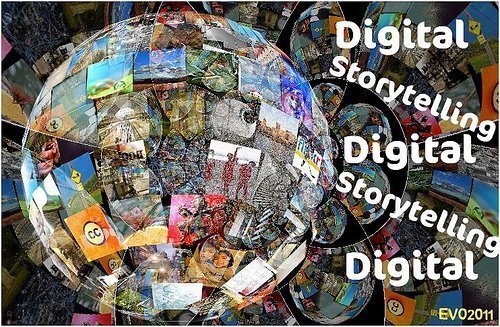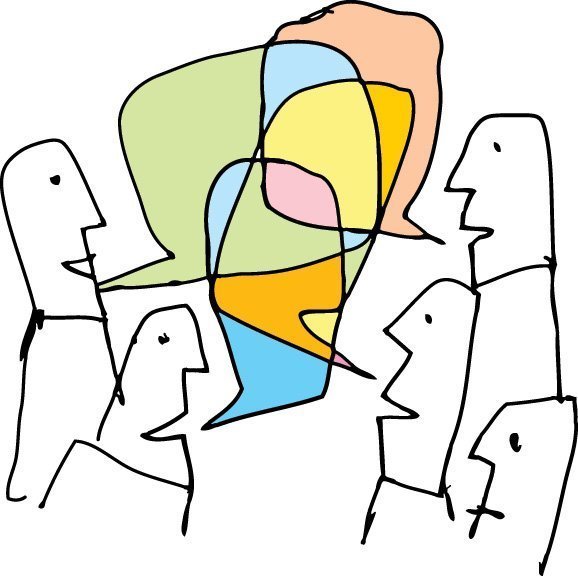
To Use OR To Be Used
My Words
I believe the quotes I picked tell a good story of these two articles. These two articles make a whole of “Decoding Digital Pedagogy”. The reason I picked these two as a whole is that these two articles make me rethink the LMS (learning management System) and relate the discussion to 21st century literacy and digital storytelling.
LMS is a mistake and limits teaching and learning. The reason I like LMS is that this kind of system provides a space for the materials and make all the materials digital and keep these materials in the space for a significant long time. In this sense, LMS is much better than notes-taking only classroom. However, I have to admit that LMS JUST relocate the materials used for instruction like articles, quizzes, etc., and interaction and collaboration are only achieved in real classroom setting. So, does this mean that it is not the time for us to apply digital pedagogy? I don’t think so.
Digital teaching and learning are not about the form or the tool we take for teaching. The use of digital tools is not to set up once and use forever without changes. How these technologies changed the way we interpret and communicate should be paid attention. About digital teaching and learning, the workshop done by 21st century literacy group provides several good sources (Good Job!), and digital storytelling is also a good way.
There are some overlapping between 21st century literacy and digital storytelling. The similarity about these two concepts is that students can gain authority and express themselves by using the technology in digital forms. Creativity is seen from the product and the process of producing involves collaboration, inquiry and writing and so on. Students, seen as agent in the creation, have their own voice to say something. Like digital storytelling, students can tell their own stories in the ways they like. This type of storytelling allow sorts of methods, models, genres and voices to involve.
Digital tools are functioning as powerful sponsors and provide more accesses for people to the resources and know more about literacy.
One impressive thing I got from Words at Work and Play is that the different effects brought by different playing. In the first generation, children played with their hands touching and got better performance on subjects learning when they went to school; however, when coming to the third generation in the book, children played more with technology and digital tools and were good at technology using and collaboration. These examples are also the evidence that people would develop literate ability with different focus when the sponsors are different.
The use of digital tools is to have more possibilities rather than relocation of materials and the center of the use of digital tools are students. I like a question asked in part 2 most: “Where is my authority now that all authority is a Google search away?” And the most important question that Morris thinks, which the most interesting question I think is: “What happens when learning is removed from the classroom and exposed to the entirety of the digital landscape?”
Beautiful exact quotes from the article:
- Decoding Digital Pedagogy, pt. 1: Beyond the LMS By Sean Michael Morris
http://www.hybridpedagogy.com/Journal/files/Beyond_the_LMS.html
Not all teaching happens like this. Not all teachers are pedagogues, nor need they be. There is a place for all styles of classroom practice, I think, just as there is a place for learners of all capabilities and approaches.
The invention of the LMS (Learning Management System) was a mistake.
No matter how creative and inspired the teacher or pedagogue behind the wheel, the LMS is no match for the wideness of the Internet. It was born a relic — at its launch utterly irrelevant to its environment and its user.
And worse, the LMS convinced us that teaching online was not only possible, it was easy — that digital pedagogy was a mere work of relocation.
The LMS largely erased mindfully aware teaching, and made excuses for unconscionable practice.
The persistence of the onerous LMS, and the ways learners have already adopted the patterns and habits of the learning within it, indicates that we are not ready to teach online
But just as the pedagogue will enter a room and rearrange the tables and chairs to suit his purpose, so too will the digital pedagogue happily hack the LMS, opening it to the wider web, or using it as a portal to a more expanded learning environment.
The digital pedagogue looks at the options, refuses the limitations of the LMS, invites her students to participate in — indeed, create — networked learning.
For some, teaching begins with authority and expertise. For the digital pedagogy, teaching begins with inquiry.
Pedagogy has at its core timeliness, mindfulness, and improvisation. Pedagogy concerns itself with the instantaneous, momentary, vital exchange that takes place in order for learning to happen.
- Decoding Digital Pedagogy, pt. 2: (Un)Mapping the Terrain By Jesse Stommel
http://www.hybridpedagogy.com/Journal/files/Unmapping_the_Terrain_of_Digital_Pedagogy.html
You can’t outsource digital pedagogy, because it is inextricably bound up in the work of teaching and learning. Digital pedagogy is not a path through the woods. It’s a compass (one that often takes several people working in concert to use).
Digital pedagogy demands that we rethink power relations between students and teachers — demands we create more collaborative and less hierarchical institutions for learning — lest we use computers to replicate the vestigial structures of industrial-era education.
The digital pedagogue teaches her (teacher) tools, doesn’t let them teach her(teacher).
“We must develop a participative pedagogy,” writes Howard Rheingold, “assisted by digital media and networked publics, that focuses on catalyzing, inspiring, nourishing, facilitating, and guiding literacies essential to individual and collective life in the 21st century.”




 Website:
Website: